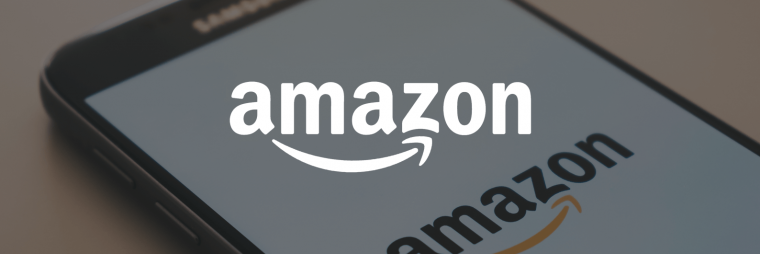3 Stock Splits to Watch

Last week, amid updates of Russia’s invasion of Ukraine and hot inflation numbers, Amazon stunned Wall Street by announcing a stock split. There had been no inkling a split was coming from one of the largest companies in the world. Usually, companies split when they’re performing well, but Amazon has been sideways throughout the pandemic despite the surge in e-commerce. Also, Amazon didn’t announce your ordinary 2-for-1 split, but a 20-to-1. AMZN shares immediately jumped. Many retail investors have shied away from Amazon, because it has been trading around a hefty US$2,800. But after the split, Amazon shares will be more affordable than Apple‘s.
Beyond affordability, are there other advantages to a stock split? Liquidity. More retail investors will be able to afford Amazon. However, the company’s instrinsic value remains exactly the same. Same pie, just sliced into smaller pieces. Or maybe a split will unlock unseen value? Let’s take a look at some historic cases of stock splits.

Apple (AAPL-Q)
Apple‘s 4-for-1 split took effect on August 31 last year. Since then through March 11, Apple has climbed 6.3%. To compare, the Nasdaq has slid 12.66%. When Apple peaked on January 3, it had jumped 20% since the summer split while the index gained over 2.4%. Looking at a one-year chart of both holdings, you can’t detect an obvious change in the relationship of Apple and the Nasdaq post-August 31. Not at all. In fact, Apple doesn’t break away from the Nasdaq until November 8, 2022, when the former soared from around $151 to nearly $180 by December 6. In fact, Apple has weathered the high-growth, high-PE tech sell-off better than most other tech stocks. Since February 1, Netflix has tumbled over 23% while Apple has slid 10.4% and the Nasdaq 9.1%. Apple and the Nasdaq have been entwined since February 1. So, did the stock split help Apple? No, but it didn’t hurt either.
What are Apple’s prospects going forward?
Last week, the company unviled a new budget, 5G-compatible iPhone, a new Mac computer and a new chip that the company boasts is more powerful than its existing M1’s. The market yawned. Shares continue to decline, but so has the entire market. As mentioned above, AAPL stock has been relatively resilient. The budget iPhone is attractive because it will draw customers who are struggling with historically high inflation but want an Apple phone. Secondly, Apple isn’t a hardware story anymore. Services now comprise a major, conssistent revenue stream. That’s money in the bank. Also, the company is still buying back shares, which is always a plus for shareholders. Apple currently trades at a 26.24x PE, down from 30.13x on January 3. It’s gotten cheaper, the cheapest so far this year.
As CNBC’s Fast Money recently said, when Apple capitalutes, then the market has bottomed. AAPL stock’s 200-day moving average is $153.47 and on Monday this week at the market open, shares dipped below that before recovering (to a degree). Buy on current weakness.

Canadian Pacific Rail (CP-T)
CPR split 5-for-1 on May 14, 2021. Since then, shares have edged up only 2.6%, but have popped more than $10 since the Russian war began on February 24. Again, there’s no indication that the split boosted share price. In fact, shares dipped that week, then recovered. Rather, a larger influence was CP‘s $31-billion purchase of Kansas City Southern to expand its railway network into Mexico. In late-November, U.S. regulators approved the takeover. Another factor has been supply chain shortages which have taken transport stocks on a very bumpy ride.
In the past year, arch rival CN has outperformed CP stock, rising 12.3% vs. CP’s 5.76%. The consensus is that KSU will enhance CP’s bottom line eventually and will turn CP into a growth story. Expect earnings upgrades going forward. Fortunately, the North American economy remains strong and the railroads as a whole are enjoying robust business. For the short term, though, CP has to carry the debt of this deal and absorb this new company. These are manageable issues, but will take time to resolve.
CP trades at a 23.82x PE and pays a 0.78% dividend. Currently, CP stock is trading right below $100 and is making new 52-week highs. It has jumped $10 since the war began. Given all the market volatility, wait for CP to dip before adding or entering. At the same time, don’t expect explosive growth here. This is a long-term story.

Amazon.com (AMZN-Q)
Let’s circle back to this tech/retail giant. Since announcing its 20-1 stock split after the Wednesday close last week, shares have jumped from $2,785.58 to nearly $3,000 in a time when tech stocks are getting hammered.. However, as of March 14, share have dipped below $2,900, so the post-split bump may be losing steam. However, Amazon also announced a new round of share buybacks, but they amount to 0.7% of shares outstanding which is a drop in the $1.489 trillion bucket.
Over the past 24 months, which covers the Covid pandemic, Amazon shares have risen 64%. To compare, QQQ-Q, the major tech ETF, has climbed nearly 70%, Microsoft 77% and Apple over 120%. You may say that 64% is not bad over two years, but the performance is disappointing in light of the e-commerce boom of this period. At the same time, some investors perceive Amazon as a pandemic stock at a time when we are exiting Covid. Not good. This may be why Amazon announced this massive split—as a measure to stir interest in a moribund stock. Even with recent gains, Amazon shares are still down 4% over the past year (in contrast Apple is up 29%).
There are positives though: Amazon remains number one in the ever-growing cloud computing business. In 2021, the cloud (AWS) comprised a whopping 74.5% of the company’s operating income. AWA revenues rose 37.1%. Also, e-commerce will not disappear even though stores have reopened. E-commerce will continue to thrive though margins are thin in retail. Gross merchandise value (total of all stuff sold to Americans) increased 17.3% in 2021. Add to that, Amazon’s share of U.S. retail e-commerce advanced 41.8% last year. Overall net income jumped 56.4% in 2021, though a full third of that gain came from Amazon’s stake in Rivian, the EV maker.
On the down side, Amazon faces rising wages and input costs like any other business. Amazon’s fullfilment expenses climbed 28.4% last year, technology and content costs rose 31.1% and marketing jumped 47.9%.
The bottom line is that AMZN stock would be flat without its thriving cloud division, and AWS is a juggernaut. The retail side will face a tricky 2022. Consider AMZN stock a partial buy though shares should advance at least 10% this year. The street is more optimistic with 33 buys and a $4,192.55 target.



